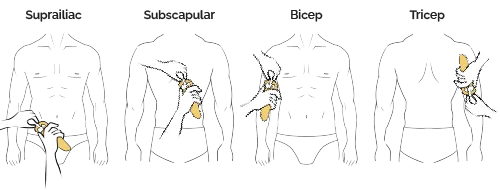Algorithm Explanation
Risk Calculation Methodology: The calculator uses age-adjusted
percentiles
to estimate mortality risk reduction from physical fitness metrics. Each input is converted
to a population percentile using evidence-based normative data stratified by age groups
(20-39, 40-59, 60+).
Absolute Risk Approach: Instead of multiplying relative risk reductions
(which can unrealistically exceed 100%), the algorithm applies
absolute risk reduction (ARR) values derived from longitudinal studies.
Each metric contributes a specific ARR per 1000 person-years based on moving from the 25th
to 75th percentile of performance.
Non-Linear Spline Modeling: Benefits follow evidence-based dose-response
curves using restricted cubic splines rather than linear scaling. Major metrics like VO₂ max
show steep initial benefits that plateau above the 75th percentile, while body composition
metrics exhibit J-shaped curves where both extremes increase risk, reflecting real
epidemiological patterns.
U-Shaped Body Fat Percentage Risk Body fat percentage follows a U-shaped
risk curve where mortality risk is lowest within an optimal range (e.g., 12-20% for
middle-aged men). Values below the lower optimal or above the upper optimal incur penalties,
with stronger quadratic penalties applied outside the absolute bounds (e.g., below 10% or
above 27%). This models the increased risks from both excessive leanness (e.g., caloric
deficit, muscle loss) and obesity (e.g., metabolic dysfunction, inflammation), based on
dose-response meta-analyses.
J-Shaped Blood Pressure Risk: Unlike the other metrics with linear risk
trends, systolic and diastolic blood pressure metrics use a J-shaped risk model where
mortality risk is lowest near an optimal "nadir" (around 125 mmHg systolic and 75 mmHg
diastolic). Values that are either too high or too low increase risk, and the percentile
scoring reflects deviation magnitude from this nadir rather than simple linear
scaling.
Age-Specific Mortality Baseline: Baseline mortality rates use precise
WHO/actuarial life table data with linear interpolation between age points, replacing
exponential approximations. This provides accurate age-adjusted risk calculations from age
20-95+ years.
Comorbidity Adjustment: Medical conditions (diabetes, heart disease,
cancer) reduce fitness benefits by 15-50% based on clinical evidence, as underlying
pathophysiology limits the protective effects of physical fitness on mortality
outcomes.
Factor-Based Correlation Adjustment: Metrics are grouped by biological
pathways (cardiovascular, strength, body composition, functional) rather than simple
pairwise correlations. When multiple metrics within the same factor are entered, cumulative
ARR is proportionally reduced to prevent double-counting shared physiological
mechanisms.
Cumulative Risk: Individual ARR values are summed after correlation and
comorbidity adjustments, then converted back to relative risk reduction using age-specific
baseline mortality rates. This prevents mathematical overcounting while maintaining
biological realism.
Weighting System: Metrics are weighted 1-3 based on their predictive
strength for all-cause mortality in the literature, with VO₂ max, body composition, and
functional tests receiving highest weights (3), strength measures moderate weights (2), and
cardiovascular parameters lower weights (1).


